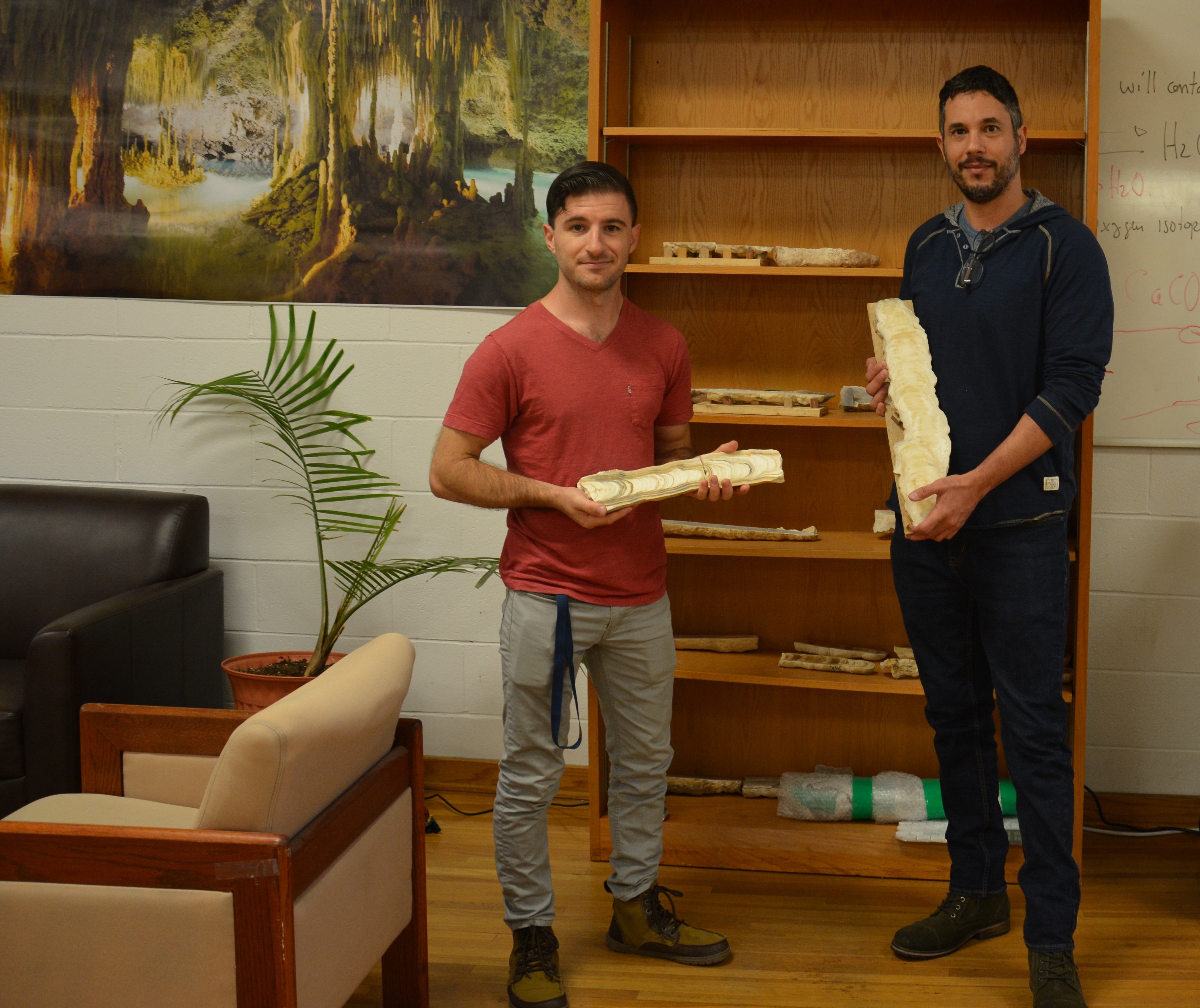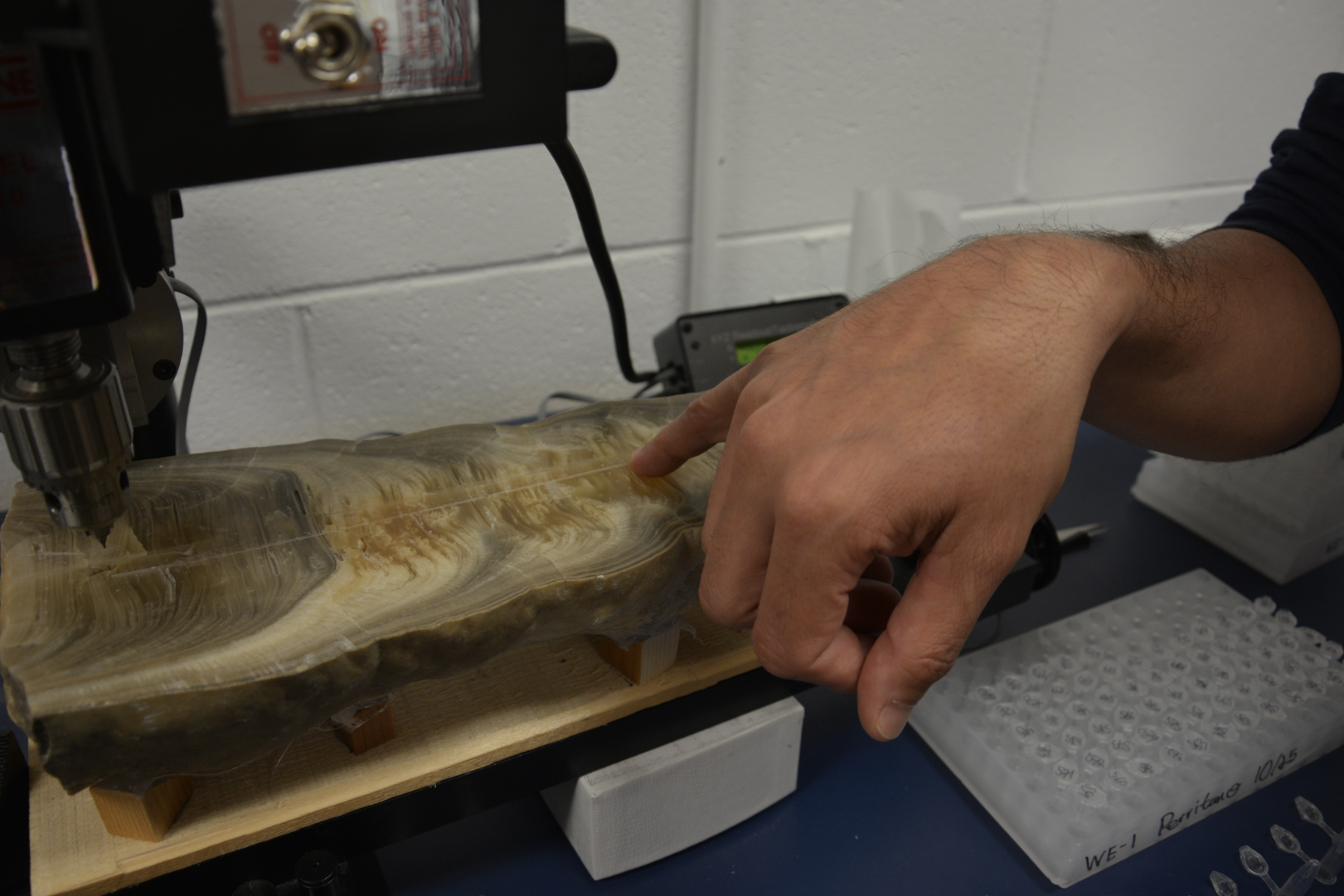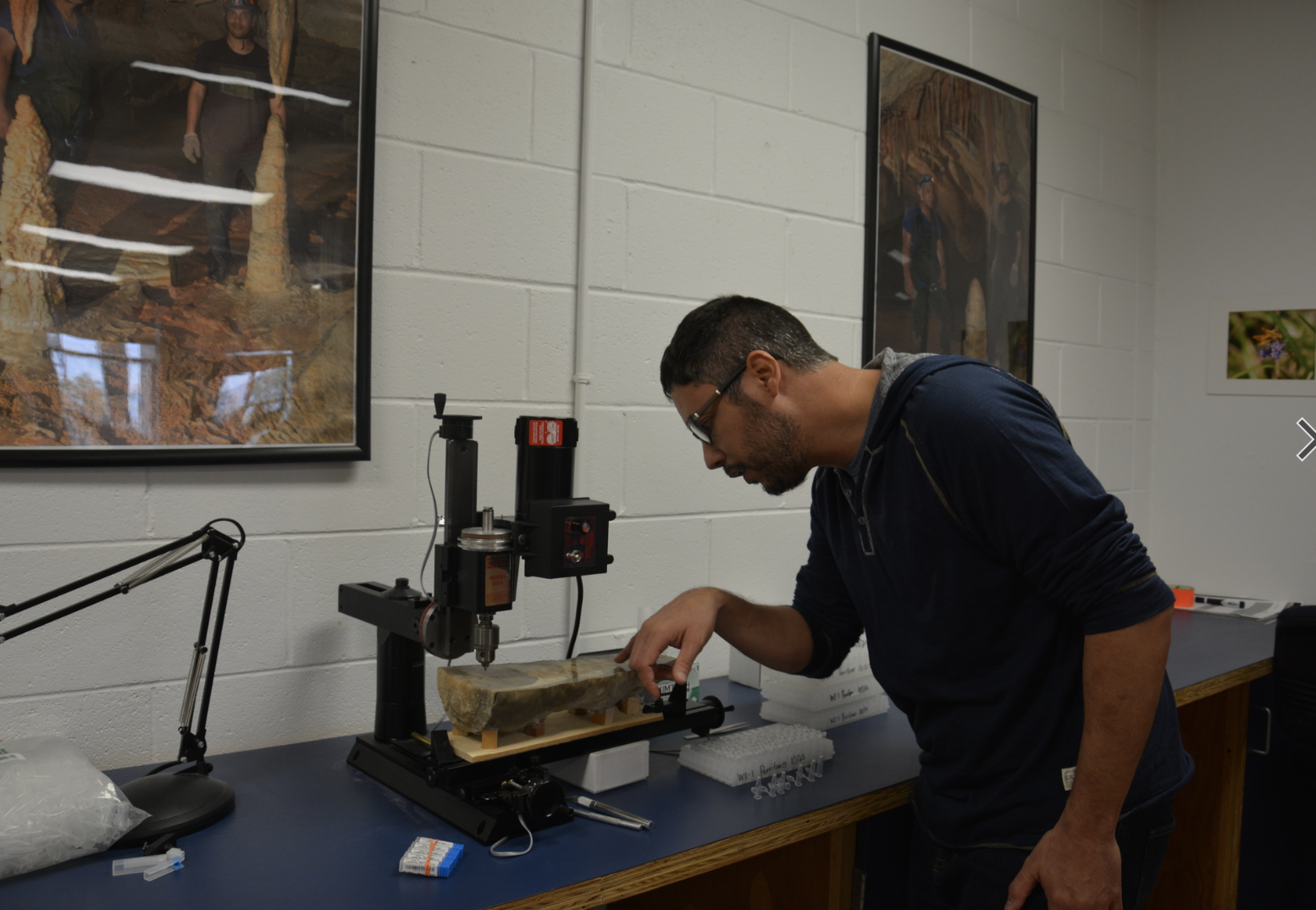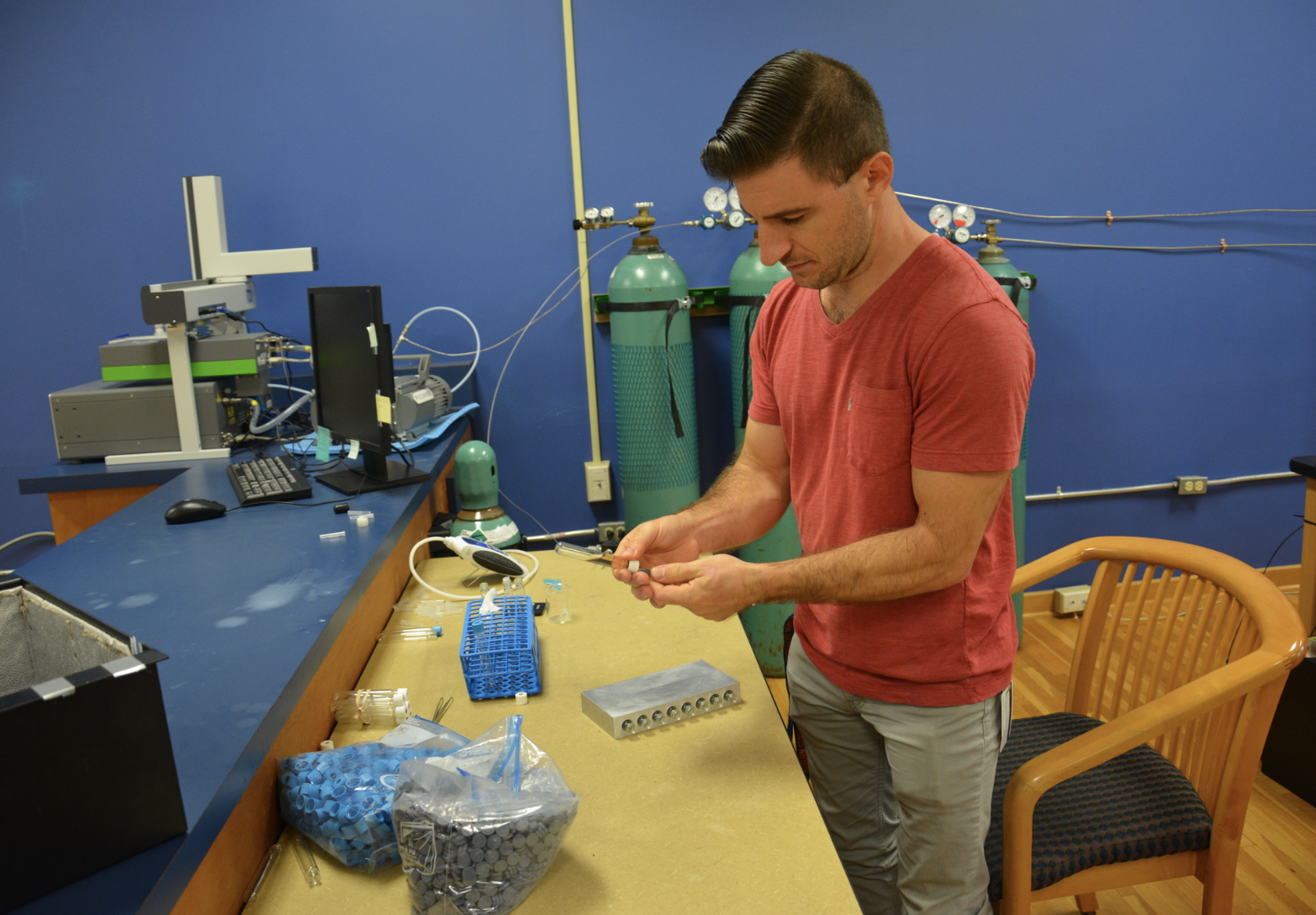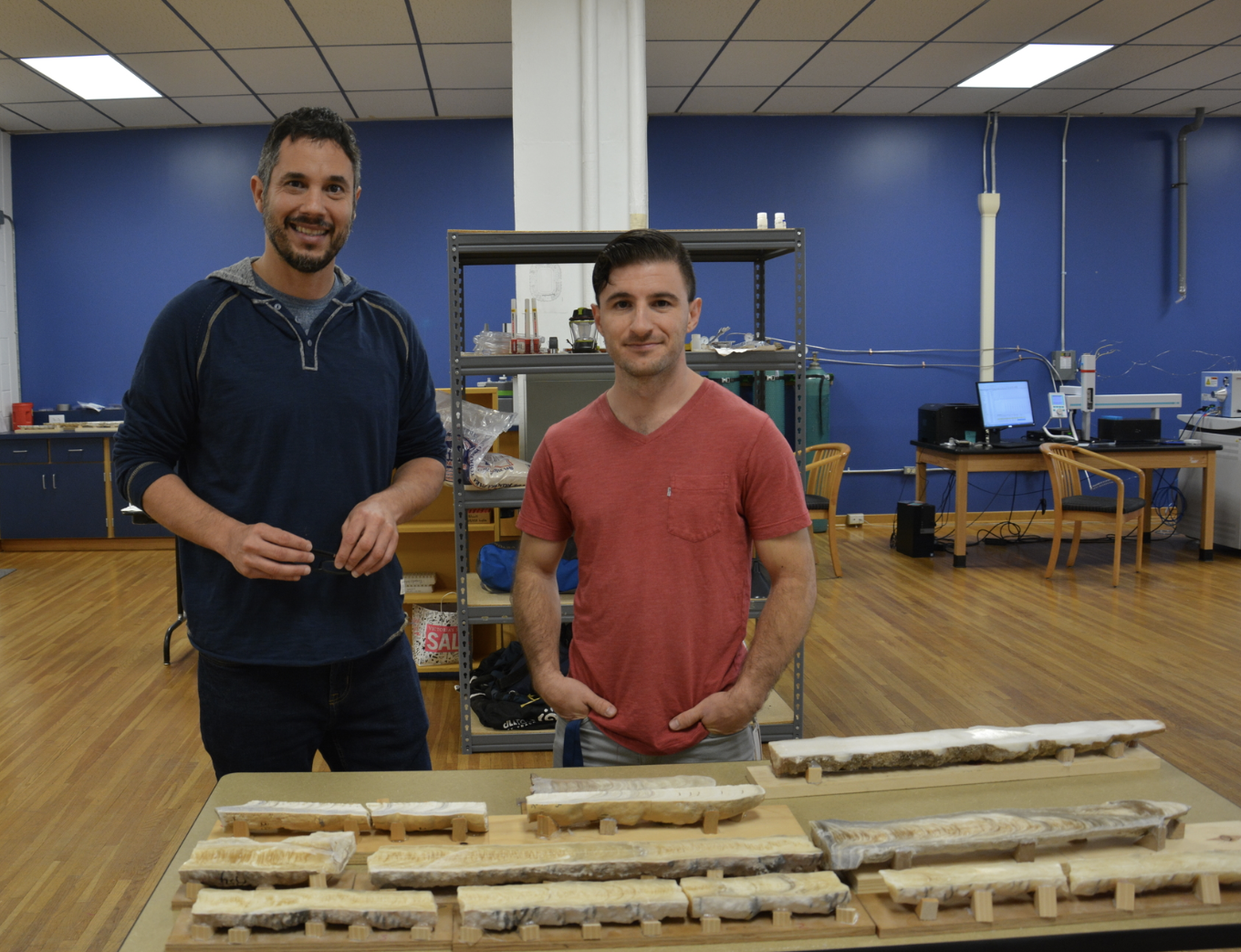COSAM News Articles 2018 November Inside COSAM Labs – Martin Medina – Stalagmites and Paleoclimatology
Inside COSAM Labs – Martin Medina – Stalagmites and Paleoclimatology
“Every cave is a library of climate and environmental information,” Dr. Martin Medina, an associate professor in the Geosciences Department of COSAM, explains. Dr. Medina’s main area of research is paleoclimatology, which is the study of past climates, and to him, caves are vital for understanding the past, present and future. Using stalagmites from caves in different Caribbean regions, Dr. Medina and his lab team are able to reconstruct past climates, dating back to hundreds of thousands of years.
Dr. Matthew DeCesare, the lab manager in the Medina lab, explained the process of analyzing stalagmites. It involves drilling tiny holes at every millimeter of the stalagmite for samples, which are then put in vials. Dr. DeCesare then reacts the samples with a small amount of acid, turning them into CO2 gas, which is injected into a mass spectrometer to collect isotopic data. The isotopic ratios of the sample allow reconstruction of what the climate was like during the time period when the stalagmite was growing. The stalagmites Medina and DeCesare collect are from Mexico, Cuba, Belize and Alabama. All of the data from these four regions is integrated in order to produce a glance at the overall picture of Caribbean climate.
Dr. Medina says that knowing about past climates can help predict the future of climate change. He wants to know for how long and to what extent the climate will change in the future, once the emission of greenhouse gases is stopped. His goal is to challenge prevailing ideas on climate change, and the valuable information he has on past climates will allow for more accurate models of the future.
Dr. Medina also uses his data from stalagmites to discover to what extent the hydrological cycle, which is precipitation and evaporation, will become extreme in the future. By looking at how the hydrological cycle behaved under natural conditions in the past, it will allow for a more complete picture of the impact humans have on the intensity of rainfall, aridity of areas and frequency of tropical cyclones.
Not only is Dr. Martin Medina’s research impactful globally, but he has some truly remarkable findings as well. There are hidden messages in each stalagmite, like charcoal being evidence of humans building fires in caves, or pieces of pottery that show the art from a past era. One student in Dr. Medina’s lab found the remarkable stalagmite, appropriately named, “War Eagle” in Alabama, which dates back 12,000 years. Another student is presenting a stalagmite that dates back 100,000 years in an upcoming conference.
Medina and DeCesare’s advice for students interested in research is to always “go for it.” “Talk to your professors and show interest,” Dr. DeCesare recommended, “Find what you like, or don’t like, and enjoy the process.” Dr. Medina explains that finding what you love to do is a combination of doing as much as you can for your passion and being realistic. Both Medina and DeCesare stress the importance of hard work, saying, “You have to work hard to do well.”
Latest Headlines
-
02/12/2025
-
02/11/2025
-
02/10/2025
-
01/30/2025
-
12/03/2024

